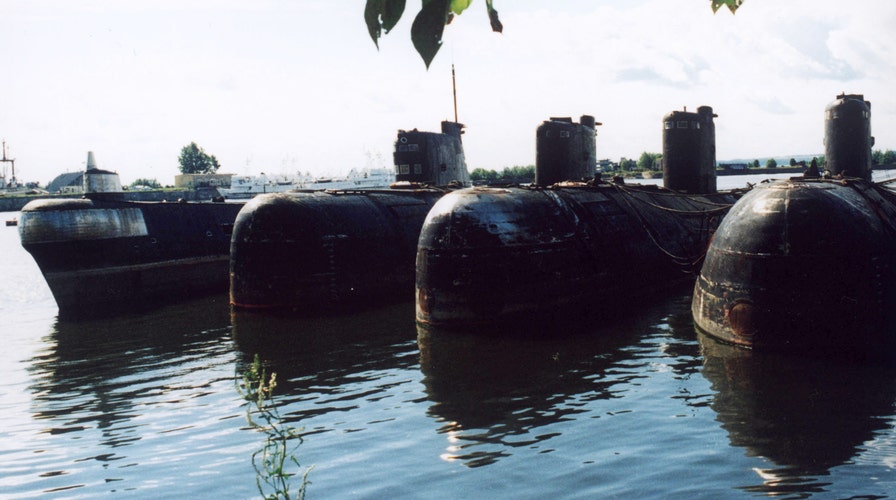Fox Business Flash top headlines for August 4
Fox Business Flash top headlines are here. Check out what's clicking on FoxBusiness.com.
Russian state atomic energy corporation Rosatom is planning to remove the most dangerous radioactive items from the country’s Arctic seafloor.
State news agency TASS reports that the six most radioactive items will be removed from the seafloor over the next 8 years.
The objects include the sunken parts of an icebreaker, reactors with spent nuclear fuel and nuclear submarines, according to TASS.
MYSTERIOUS RADIATION SPIKE REPORTED OVER PARTS OF NORTHERN EUROPE
In a statement emailed to Fox News Wednesday, Rosatom cited a European Commission-funded feasibility study, which reported about 18,000 radioactive objects on the seafloors of the Kara Sea and the Barents Sea. "Six of them – namely reactors from a K-11, a K-19, and a K-140 submarine, two entire K-27 and K-159 submarines, and the spent fuel from an old Lenin icebreaker reactor – contain more than 90% of the objects’ collective radioactivity," Rosatom explained.

File photo - Unidentified Russian submarines are moored before being decommissioned at naval base July 2000. (Photo by Getty Images)
"We consider even the extremely low probability of radioactive materials leaking from these objects as posing an unacceptable risk for the ecosystems of the Arctic," Rosatom added. "Thus, we see it necessary to raise all six objects, including the K-27 and K-159 submarines. Raising all six objects, safely transporting them for disposal, and preparing them for long-term storage will take at least eight years."
"This is a complex, unique, and unprecedented project." the company said. "It will require the combined efforts of many organisations in Russia so as to efficiently obtain information on levels of radioactivity, the types of equipment that will be needed to lift the objects, and transportation needs, amongst other issues. Safety is our main priority, and therefore the primary determinant of the project’s timeline is the imperative to minimize risks to personnel, the surrounding population, and the environment."
On its website, Russia’s nuclear submarine decommissioning organization puts the cost of raising the six objects at 278 million Euros ($327.8 million).
CLICK HERE TO GET THE FOX NEWS APP
Environmental organization the Bellona Foundation recently reported that nuclear officials from Norway and Russia have met online to discuss raising sunken nuclear subs in the Arctic. Most of the subs were deliberately scuttled by the Soviet military during the Cold War, according to the Oslo-based non-profit organization. K-159 was being towed to a scrapyard when it sank during a storm in the Barents Sea on Aug. 30, 2003, according to Getty. Nine crew members died in the sinking.
Follow James Rogers on Twitter @jamesjrogers

